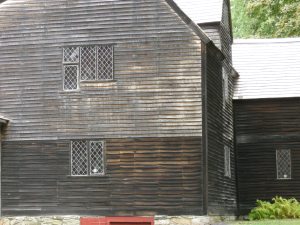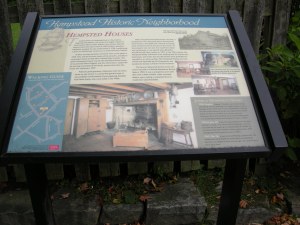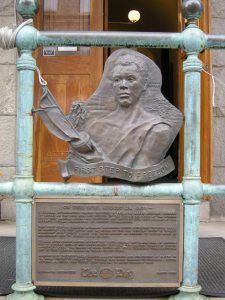There is something about whaling cities. I grew up in one in Massachusetts. The sound of the gulls in the early morning as they follow the fisherman into port with his catch, the crisp salt air, cool mist and fog that greets the early riser on his morning walk, before being burned off by the rising sun. The docks lined with fishing fleets that still embark on distant journeys, carrying on a tradition that no longer includes, thankfully, the “harvesting” of whales. Wind vanes, the landlubbers compass, shaped like whales, ships and seabirds, direct us from rooftops along cobblestone streets. Widow’s walks are everywhere atop four square colonials, where we romanticize about the wives and lovers who wept and awaited their sailor’s return.
Everywhere the architecture reminds us of a hard won treasure. Blubber, whale oil and bone were transformed by savvy merchants into marble mansions, grand colonials and bigger, sturdier ships with colorful carved figureheads to guard their way. The affluence that this now distasteful endeavor created, was immense. Subject to no taxes, these men were able to build grand houses, cities and towns with their fortunes. Thank goodness. Our cities are the better for them. While we may not have approved of their means, we certainly appreciate their gifts.
If only we could have stopped there. If only the next generations of rich folk hadn’t felt the need to build grander monuments, skyscrapers of concrete and glass, where they could stand in the clouds to survey their minions.
Of course, I am just a common man, but all the common folk I know are much more comfortable at ground level, with materials they understand, bricks and mortar, posts and clapboards, where they can look into the windows of a shop to select a pastry, or step through a door at street level to greet their friend, postman, or merchant. This was a time when architecture was on a human scale, user friendly. If a board cracked, anyone could repair it. If a glass broke, it was easily replaced. No one I know knows how to fix a skyscraper.
But I’m off on a tangent again, when I really wanted to tell you more about New London and some fascinating places to visit there. You can walk down the city streets and read its stories through the architecture. 17th, 18th and 19th centuries are well represented. So much has changed, but with a keen eye, you can see it, a history that is plain and plentiful along the sidewalks of Bank Street, Thames, and Main, Starr Street and Whaler’s Row. Gables, porticos, colonnades, distinguishable artifacts of another era. No matter how many times you visit, there will be more to see and much to learn.
On a recent visit, we wanted to see the Hempsted house again, but it was closed. So we tried the Shaw Mansion, which houses the New London Historical Society – but that was closed. Determined to explore New London history, we drove down Bank Street and found something open – the Customs House.

But first, back to the Hempstead house – a wonderful restoration which every old house lover should visit when it opens again in the summer. We happened upon it years ago when we’d begun researching for the restoration of our own 17th century house in the early 1970’s. I remember our surprise at happening upon such an ancient place in what seemed the most unlikely neighborhood. The corner of Jay and Hempstead Streets, smack in the middle of a city neighborhood, across the street from a school, sat Joshua Hempsted’s 1678 house. Apparently, it had once enjoyed water views over Bream’s Cove, but that had since been filled in and it now overlooked city streets and houses, very unlike its own.
It was open to the public, and had undergone recent restoration. I remember a lovely lady of slight frame, silver hair and striking blue eyes, welcoming us at the front door. It was one of the most ancient houses we had visited at the beginning of our old house journey, and we were completely enamored with its medieval presence. The diamond leaded glass, the old plaster, the charcoal color of the rived wood siding, we wanted to know it all – who built it, who restored and cared for it, and how they did it.
We learned as much about the lovely docent at the front door as we did about the house. Kind people with rich histories, who are willing to share them, are often as much a treasure as the house itself. It’s been years, but I remember that Edward R. Murrow counted among her friends and he’d visited her there. Her tales were as plentiful as our questions. She also shared the secret formula to achieving that rich, dark color on the short scarf joined clapboards. She said that she watched them fill a barrel with creosote, linseed oil and thinner and drop the clapboards in there before nailing them up. Lucky for us, creosote, which was like a liquid black tar material, now outlawed, was still available at the time, and we couldn’t wait to get home to use it.

We finally entered, crossed that threshold, and left the 20th century. Overwhelmed and excited by its presence, we savored every architectural detail, and processed and filed it all into mental inventory. That house had cemented for us our love of the late 17th to the early 18th century period, and we’d refer continually to the rich inventory of its historical precedents.
An interesting note about Joshua Hempsted, among so many others – he was born in this house in 1687 and is especially noted for the diary he kept from 1711 until his death in 1758. Besides being a window into society of that time, it is also one of the earliest surviving documents to talk about whaling in Connecticut. In 1718, he mentions hiring out his whale boat to locals to fish the whales which then populated Long Island Sound. Imagine!
The house is owned and operated by the CT Landmarks Society, and is open in the summer and for special events throughout the year. One event, coming up in time for Halloween, is about, what else – ghosts!

Now, back to the Customs House. Oh my. 1833 – beyond the period of our usual interest in architecture, but the history is wonderful. As wonderful as the docents who greeted us inside. Ruth was kind and apologetic about the temperature which she found frigid – the furnace was on the blink. Someone was working on it. I thought, how nice, the full experience of the building in 1833 – no heat. But it was soon working, and cooking us!

The front doors, she explained, had been fabricated from planks donated during the restoration of Old Ironsides in the 1830’s. I had to go back out and touch them! We’re hardly in the entrance and we’re “entranced” already.
We had just wanted to breeze through without a tour, to take what we could of the architectural elements, but found ourselves lingering at the door listening to the docent who had just finished a tour. This is the oldest continuously operating customs house in the country as the US Customs service still maintains an office there. For two people who wanted to rush through, we instead found ourselves spending over an hour in the hallway and one front room! The docent was so knowledgeable and our questions were endless. Customs made our government go round back then – there were no taxes – they paid for everything! How and when and why it worked, how it evolved to become the Coast Guard, was fascinating, but our time there was limited. My husband reminded me we were burning daylight, there was much else to do and a sailboat to see. We will be returning soon for a full tour with Bill – a gentle & informative Customs House docent, who is steeped in stories and knows how to tell them. Having heard my story that the places we had intended to visit were closed, he assured me that the Customs House was open every day except Monday, with tours from 1 to 4. There was something very comforting in that, knowing that he and Ruth and whoever is responsible for maintaining that building and all its history, would be there to welcome us back, anytime.
Here are some photos of the Customs House, and the plaque in front with facts about its Amistad connection. I don’t want to give away too much information – you must visit!


Also, I had noticed a small gambrel a few buildings away, which Bill mentioned that if we look to its left, in the alley, we’ll see that it still retains its old cobblestones. The poor gambrel has restaurant fans and vents and other cooking artillery and heating paraphernalia sticking out of it. We wished we had a billion dollars to buy it all up, the whole street, rid it of blight and bring it back to its whaling days!
Let’s all buy lottery tickets just for that purpose. If we buy a few thousand, and win – heck, we could rebuild a city!
Some photos of Bank Street and the “Antientest Buriall Place” in New London. It is said that Benedict Arnold stood on the knoll of that burial ground and watched the British burn the city and attack Fort Griswold just across the river in Groton. Fort Griswold is also worth a visit. It is a park now, with the remains of this Revolutionary War fort with Civil War additions and an 18th century house where those wounded in the battle were cared for.




